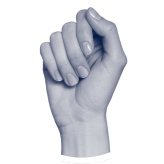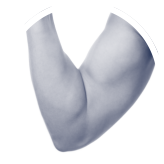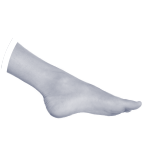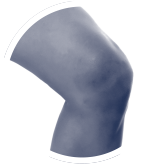
Cricket is a popular sport enjoyed by thousands of people around the globe, regardless of age or athletic ability. It requires immense physical agility, endurance, skill, and strategy. Players engage in a wide range of physical activities, including running, throwing, batting, bowling, catching, and diving, and while it is a noncontact sport, the nature of the game exposes players to significant overuse and impact injuries.
In this article, we will explore the six most common cricket injuries, highlighting their symptoms and discussing potential treatment options.
1. Ankle Sprains
Ankle sprains are a prevalent cricket injury that occurs when the foot twists or rolls forcefully, causing damage to the ligaments surrounding the ankle joint.
Symptoms include pain, swelling, bruising, and difficulty in bearing weight on the affected foot.
Treatment
Initially, you might need to avoid putting your full weight on the injured ankle and rest to allow healing.
Apply ice packs wrapped in a cloth for 15-20 minutes at regular intervals to reduce swelling; adding some compression using a bandage and elevating the leg will also help with swelling. You can continue to use ice for 3-5 days post-injury.
Sports tape or ankle support can help to reduce pain and give you some short-term comfort when walking. This shouldn’t be a long-term solution though, and as your pain settles, you will need to engage in rehabilitation exercises to strengthen the ankle, work on proprioception and restore mobility.
In severe cases, surgery may be required.
2. Muscle Strains – most typically hamstring or calf
Muscle strains occur when the muscles in the leg stretch or tear, typically due to explosive sprints, sudden stops, or rapid changes in direction. Common symptoms include sharp pain at, tenderness, and difficulty in walking or running.
Treatment:
- You will need to rest and discontinue activities that cause added strain on the injured hamstring or calf, to allow proper healing.
- Swelling can be managed with ice and elevation; this needs to be done a few times a day for the first 3-5 days following injury.
- A qualified Physiotherapist will guide you on an exercise programme which will include gentle stretching and strengthening exercises.
- You will need a gradual return to activity following a structured rehabilitation program.
3. Shoulder Injuries:
Cricket involves repetitive overhead movements, increasing the risk of shoulder injuries. Common injuries include rotator cuff strains, dislocations, and impingements. Symptoms vary but may include pain, limited range of motion, and weakness in the affected shoulder.
Treatment:
Treatment will depend on exactly what your diagnosis is, therefore it is vital that you get a speedy and accurate diagnosis in order to get the best treatment and outcome.
Your treatment is likely to include:
- Giving the shoulder sufficient rest to promote healing and prevent further damage.
- In some cases, a sling may be necessary to immobilise the shoulder and aid the healing process.
- Nonsteroidal anti-inflammatory drugs (NSAIDs) may be prescribed to reduce pain and inflammation.
- Once the pain has settled a structured rehabilitation program that includes stability, stretching and strengthening exercises can help regain shoulder strength and mobility.
- Surgery: In severe cases or persistent injuries, surgical intervention may be required to repair damaged structures.
4. Medial Meniscus Tear
The medial meniscus is a C-shaped area of cartilage located at the top of the tibia bone in your lower leg. It helps to protect the knee joint from the stress of running, walking and bending, so it’s no wonder a torn medial meniscus is a common cricketing injury.
Injuries can happen as you turn quickly to run, but they can also occur slowly over time through wear and tear. If you have a medial meniscus tear, you may feel pain on the inside of the knee, discomfort when squatting or bending, or have swelling in the area.
Treatment:
A physiotherapist can help you manage the condition. If the pain persists or you experience locking of the knee, you may require a knee arthroscopy (keyhole surgery) to diagnose the extent of the injury and decide the right course of treatment.
5. Lower Back Strains:
Lower back strains are common in cricket due to repetitive bending, twisting, and sudden movements. In more severe cases it can cause a PARS stress fracture, this is particularly prevalent among younger, professional fast bowlers.
Symptoms may include localised pain, muscle spasms, stiffness, and limited range of motion.
Treatment:
- The majority of patients with back pain have mechanical back pain which responds very well to physiotherapy.
- Avoid activities that worsen the pain and allow the back muscles to rest and recover.
- Using heat can also help relieve muscle spasms and stiffness. Ice could also be used if the main symptom is pain and inflammation.
- Over-the-counter pain relievers can provide temporary relief from discomfort.
- A qualified physiotherapist can design a tailored exercise program to strengthen the back muscles and improve flexibility.
- Good posture and ergonomics: Maintaining proper posture during cricket activities and daily life can prevent further strain on the lower back.
If a fracture is suspected, it is important to get it checked out urgently by a spinal specialist to ensure you receive the correct treatment.
6. Finger Fractures:
Cricket players often sustain finger fractures when attempting to catch or field the ball. Symptoms include pain, swelling, deformity, and difficulty in moving the finger.
Treatment:
If you think that you have fractured your finger, it is vital that you seek an orthopaedic opinion to make sure that it is managed appropriately. Sometimes splinting the fractured finger to immobilise it is enough, while more complex fractures might require surgery.
London Bridge Orthopaedics
At LBO we’ve got you covered; we have specialists in all areas of orthopaedics, so whatever body part you have injured we can ensure you are seen quickly and receive the best possible care.
Our main clinic is located in The Shard which is part of HCA, and allows our patients to have access to state-of-the-art diagnostic facilities.
We take a multidisciplinary approach to each patient’s condition, meaning when necessary we work closely with other specialist departments within the centre to provide you with a treatment plan that assists your full recovery.
For more information about our specialists please click here.
And if you would like to make an appointment, please call our dedicated booking line on 0203 576 5296 or use our online booking form.









